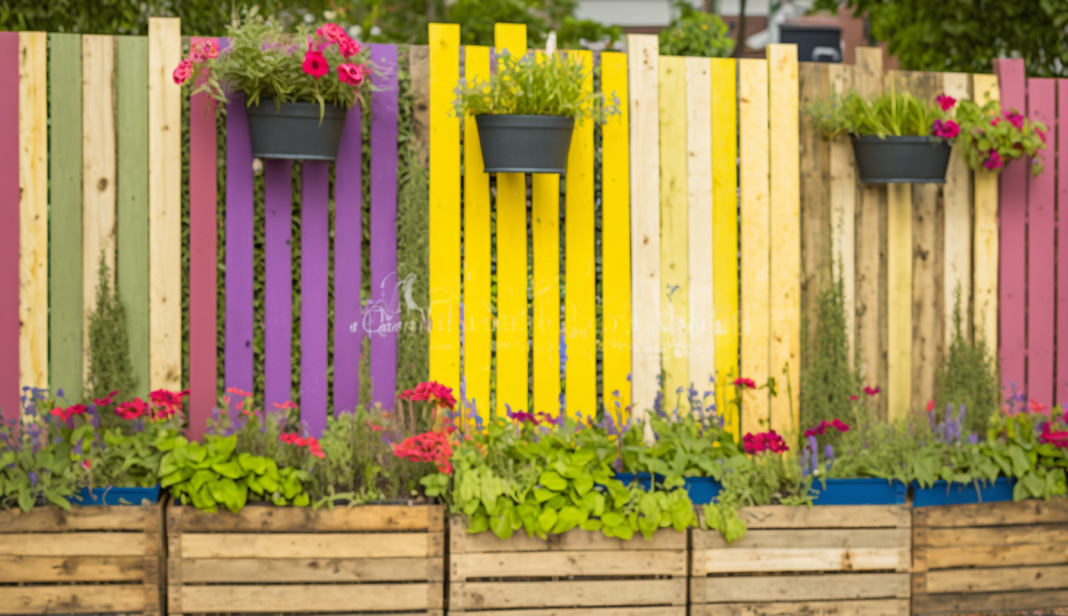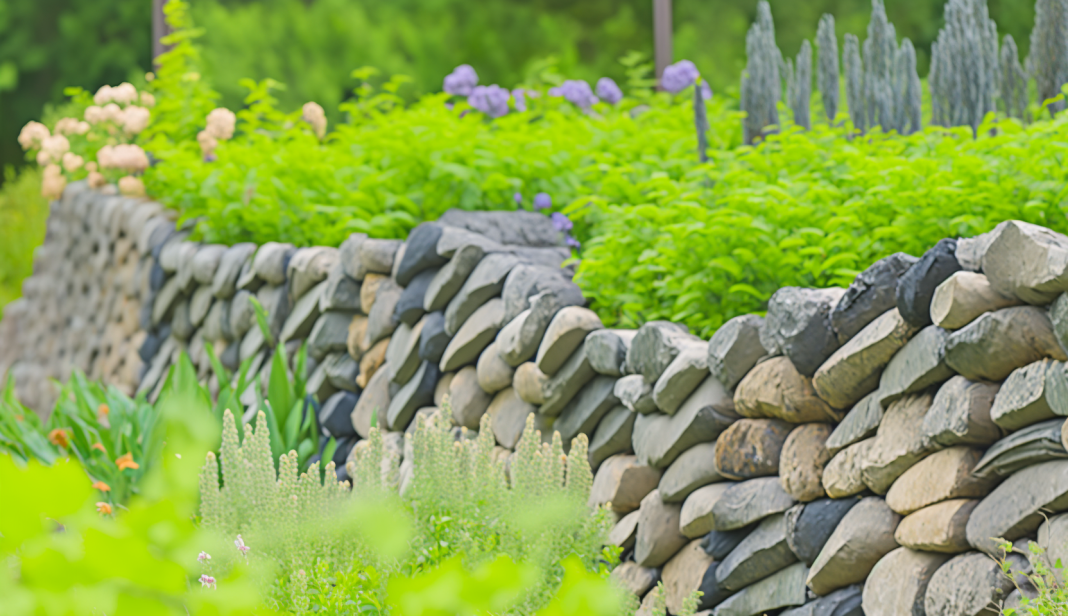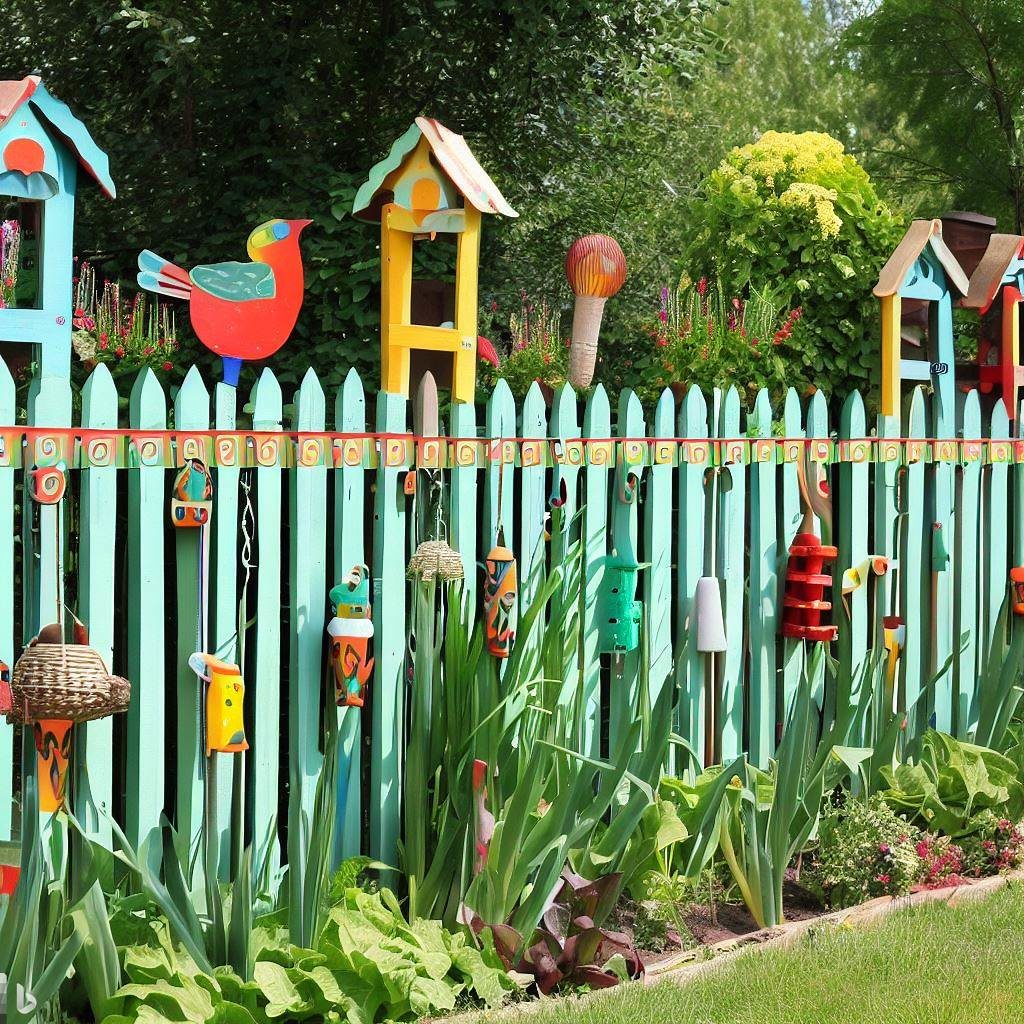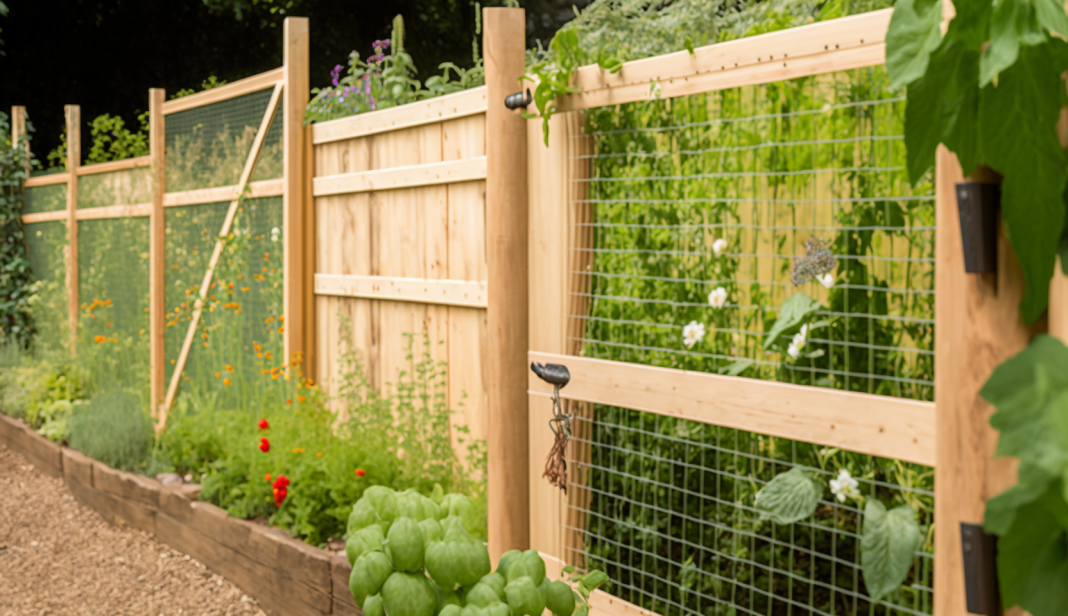Transform your vegetable garden with an affordable, eco-friendly, and stylish fence by following our comprehensive guide with tips and tricks. A vegetable garden fence is essential for protecting your crops from pests and animals, defining garden boundaries, and enhancing the aesthetics of your outdoor space. In this guide, we’ll cover the importance of vegetable garden fences, the benefits of DIY, step-by-step instructions, various fence types, and answers to common questions. For additional tips and information on vegetable gardening, check out this helpful resource from The Old Farmer’s Almanac. Let’s dive in!
Importance of Vegetable Garden Fences
Protection Against Pests and Animals
Vegetable garden fences are vital for keeping out unwanted visitors like rabbits, deer, and other animals that can damage crops. A well-designed fence can also help deter pests like insects and rodents, ensuring a healthier and more productive garden.
Enhancing Garden Aesthetics
A fence can add character and style to your vegetable garden, creating a visually appealing space that complements the rest of your landscape. With countless design options available, you can choose a fence that reflects your taste and enhances the overall aesthetics of your garden.
Defining Garden Boundaries
A fence helps define the boundaries of your vegetable garden, separating it from other parts of your landscape or your neighbor’s property. This clear delineation can make garden maintenance easier and prevent disputes with neighbors over property lines.
Benefits of a DIY Vegetable Garden Fence
Cost-Effective
Building your vegetable garden fence can save you money compared to hiring a professional. You can also choose materials and designs that suit your budget, ensuring an affordable fencing solution for your garden.
Customizable
A DIY approach allows you to create a fence that meets your needs and preferences. You can tailor the design, materials, and features to fit your garden’s size, layout, and style.
Environmentally Friendly
By using eco-friendly materials and techniques, you can minimize the environmental impact of your vegetable garden fence. This is an excellent opportunity to incorporate recycled or repurposed materials, reducing waste and promoting sustainability.

Step-by-Step Guide to Building a Vegetable Garden Fence
1. Planning and Design
Before you start building your fence, plan its layout and design. Determine the size and shape of your garden, where you want the fence to be, and any features like gates or trellises. Sketch a rough design and take measurements to ensure enough materials and space for your fence.
2. Choosing Materials
Select materials that suit your budget, style, and functional requirements. Common materials for vegetable garden fences include wood, metal, vinyl, and composite materials. Consider factors like durability, weather resistance, and maintenance requirements when choosing materials.
3. Preparing the Site
Clear the area where you will build the fence, removing any debris, rocks, or plants that might interfere with construction. Mark the fence line and post positions with stakes and string, ensuring they are straight and level.
4. Installing the Fence
Install fence posts by digging holes, placing the posts, and filling the gaps with concrete or gravel. Attach fencing materials like panels, pickets, or wire mesh to the posts using brackets, nails, or screws. If you’re using pre-fabricated fence panels, follow the manufacturer’s instructions for assembly and installation.
5. Maintenance Tips
Regularly inspect your fence for signs of damage or wear, and repair or replace any damaged parts promptly. Use appropriate cleaning products and techniques for the specific materials to clean your fence as needed. They perform routine maintenance tasks like painting, sealing, or staining wooden fences to prolong their lifespan.

Types of Vegetable Garden Fences
Easy Vegetable Garden Fence
A simple wire mesh fence with wooden or metal posts is a good option for an easy vegetable garden fence. This type of fence is quick to install and requires minimal tools and expertise. You can find wire mesh fencing at most home improvement stores.
Cheap Vegetable Garden Fence
You can use recycled or repurposed materials if you’re looking for a cheap vegetable garden fence. Pallet wood, wire mesh, and reclaimed lumber are all good options. You can also save money by choosing simple designs that require fewer materials and less labour.
Non-Toxic Vegetable Garden Fence
When growing vegetables, using non-toxic materials for your fence is important. This will help to ensure that your crops are safe to eat. Untreated wood, vinyl, and metal are good for non-toxic fencing materials.
Decorative Vegetable Garden Fence
You can install a decorative fence if you want to add visual interest to your garden. There are many different ways to decorate a vegetable garden fence, so you can choose a design that suits your taste. You can paint your fence, add latticework, or incorporate other decorative elements.
Tall Vegetable Garden Fence
If your garden is prone to visits from larger animals, like deer, you may need to install a tall fence to keep them out. A fence height of at least 7-8 feet should deter most deer. You can use wood, vinyl, or metal for a tall, sturdy fence.
Natural Vegetable Garden Fence
If you’re looking for a more natural fence, use materials like bamboo, wattle, or brushwood. These fences blend seamlessly with the surrounding landscape and provide a sustainable, environmentally friendly fencing option for your garden.
Weather-Resistant Vegetable Garden Fence
If you live in an area with harsh weather conditions, you must choose a fence material that can withstand the elements. Vinyl, metal, and composite are all good options for weather-resistant fencing materials. These materials are designed to resist rot, warping, and fading, ensuring they last for many years.
Answers to Common Questions about Vegetable Garden Fences
1. Best Materials
The best materials for a vegetable garden fence depend on your budget, style, and functional requirements. Wood, metal, vinyl, and composite materials are all popular choices, offering various benefits in terms of durability, maintenance, and aesthetics.
2. Ideal Height
The ideal height for a vegetable garden fence depends on the type of animals and pests you’re trying to keep out. A 3-4 feet fence should be sufficient for deterring small animals like rabbits, while a 7-8 foot fence may be necessary to keep out larger animals like deer.
3. Keeping Out Animals and Pests
A fence height, material, and design combination can help deter animals and pests from entering your garden. For example, a tall fence with a smooth surface and no footholds will be more challenging for animals to climb or jump over. You can also use deterrents like motion-activated sprinklers or ultrasonic repellers to discourage pests.
4. Making the Fence Attractive and Decorative
Personalize your fence with paint, decorative elements, or designs that complement your garden’s style. You can add features like trellises, gates, or garden art to create visual interest and enhance your fence’s overall appeal.
5. Affordable and Eco-friendly Fencing Options
Recycled or repurposed materials, such as pallet wood or reclaimed lumber, can create an affordable, eco-friendly fence. Alternatively, you can choose natural materials like bamboo or wattle for a sustainable and environmentally friendly solution.

Customizing Your Fence for Function and Style
1. Adding Gates
Incorporate a gate into your fence design to allow easy access to your garden while maintaining its protective function. Choose a gate style and materials that complement your fence and ensure it is secure and easy to operate.
2. Incorporating Trellises
Trellises can be attached to your fence to support climbing plants like beans, peas, or flowering vines. This adds visual interest to your fence and maximizes your garden’s vertical space for additional planting opportunities.
3. Choosing Paint Colors and Finishes
Select paint colours and finishes that suit your style and the overall aesthetic of your garden. You can opt for natural wood tones, bold colours, or patterns to create a unique and eye-catching fence.
Conclusion
A well-designed vegetable garden fence protects your garden, enhances its beauty, and defines its boundaries. Following our comprehensive guide, you can create an affordable, eco-friendly, stylish fence that meets your needs and preferences. With some planning, creativity, and elbow grease, you can transform your garden space and enjoy the many benefits of a DIY vegetable garden fence. Remember to share your experiences and ideas in the comments below and inspire others to embark on their fencing journey!
Testimonial
“Building my own vegetable garden fence using the tips and techniques from this guide was a game-changer for my garden. Not only did it help me create a beautiful and functional fence that protected my crops from pests and animals and added a unique touch to my outdoor space. I saved money using recycled materials, and the step-by-step instructions made the whole process simple and enjoyable. I highly recommend this guide to anyone looking to improve their garden with a DIY fence.” – Sarah J., Avid Gardener and DIY Enthusiast.
FAQs:
1. Why is a vegetable garden fence necessary?
A vegetable garden fence is essential for protecting your crops from pests and animals, defining garden boundaries, and enhancing the aesthetics of your outdoor space.
2. What are the benefits of building a DIY vegetable garden fence?
Building a DIY vegetable garden fence can be cost-effective, customizable, and environmentally friendly compared to hiring a professional or buying a pre-made fence.
3. What materials can be used for a vegetable garden fence?
Common materials for vegetable garden fences include wood, metal, vinyl, and composite materials. Consider factors like durability, weather resistance, and maintenance requirements when choosing materials.
4. How tall should a vegetable garden fence be?
The ideal height for a vegetable garden fence depends on the type of animals and pests you’re trying to keep out. A 3-4 feet fence should be sufficient for deterring small animals like rabbits, while a 7-8 foot fence may be necessary to keep out larger animals like deer.
5. What are some affordable and eco-friendly fencing options?
Recycled or repurposed materials, such as pallet wood or reclaimed lumber, can create an affordable, eco-friendly fence. Alternatively, you can choose natural materials like bamboo or wattle for a sustainable and environmentally friendly solution.
6. How can I customize my fence for function and style?
You can customize your fence by incorporating gates, trellises, or unique paint colours and finishes. This will help make your fence more functional and visually appealing, reflecting your style and complementing your garden’s aesthetic.

